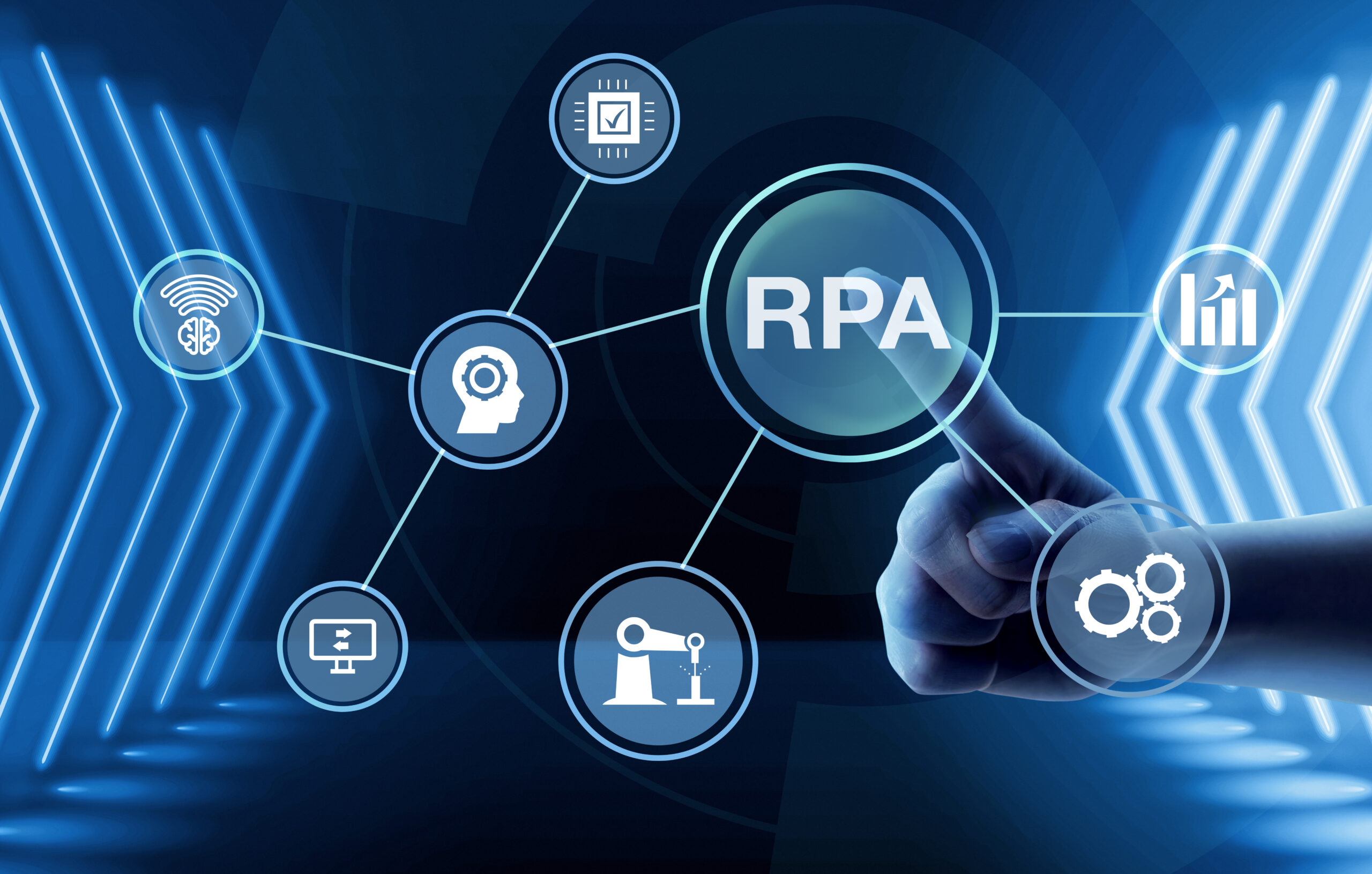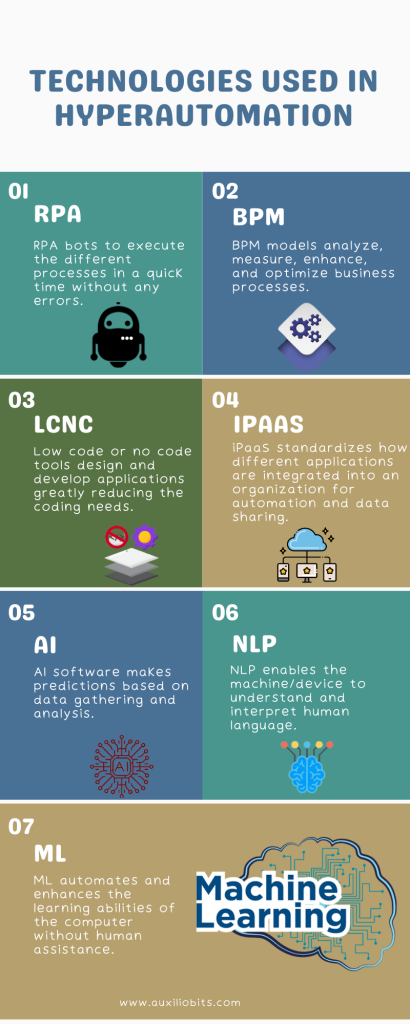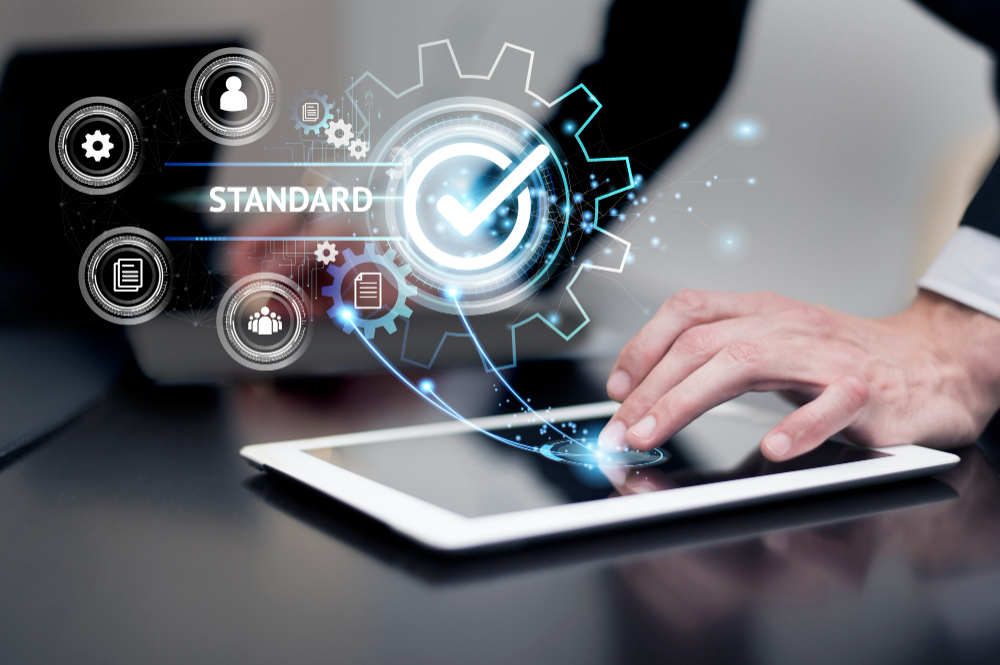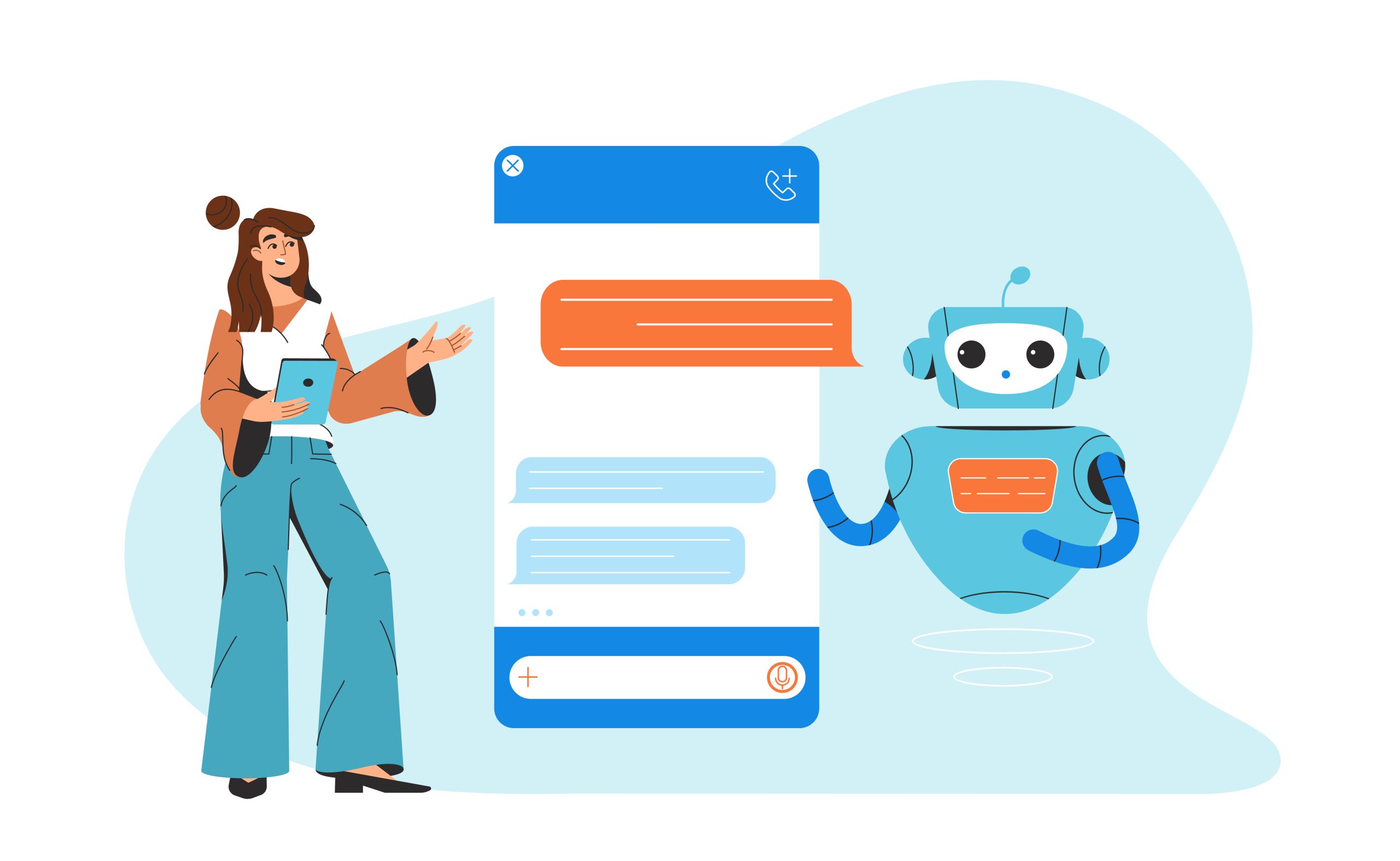
Key takeways
- Automating processes reduces time to market drastically and provides a better customer experience.
- The intelligence of AI empowers RPA to respond to process changes and increase its scope of work.
- Hyperautomation is a futuristic technology that will enhance business outcomes in years to come.
- A one-time investment in hyperautomation, can provide a multitude of benefits in the current and future operations of the business.
Automation is a buzzword that has a different connotation for different people. Some people are of the view that automation is about robots performing all routine tasks, others think that robots are entities with intelligence that will replace humans!
The basic concept of automation is streamlining processes with the help of bots. This is in essence what Robotic Process Automation (RPA) stands for. RPA offers benefits such as enhancing the speed of processes and minimizing errors. These factors help a business achieve better outcomes.
However, RPA has its limitations as it lacks the ability to think and function beyond a prescribed set of activities. This technology is incapable of thinking, learning, and making decisions. It is because of these reasons that the momentum that RPA adoption had gained in the past decade has slowed. Businesses are looking for automation solutions that can work independently.
To enhance the capabilities of RPA, Artificial Intelligence (AI) with its subsets Machine Learning (ML) and Natural Language Processing (NLP) are integrated into the RPA software. These technologies greatly enhance the capabilities of RPA and make it responsive to unknown situations. Integration of AI technologies with RPA expands the volume and the types of tasks performed. The intelligence of AI empowers RPA to respond to process changes and increase its scope of work.
Integrating AI into the RPA software is known as hyperautomation or intelligent automation. Hyperautomation is a business-driven approach by organizations to identify and automate business processes by leveraging various tools and technologies. Hyperautomation also uses technologies like Integration Platform as a Service (iPaaS), Business Process Management (BPM), and Low code or no code tools.
Technologies used in Hyperautomation
RPA
Robotic Process Automation works perfectly for rule-based processes. The RPA bots execute the different steps in a process in a quick time without any errors.
BPM
BPM models analyze, measure, enhance, and optimize business processes. It identifies the areas of improvement to enhance the efficacy of a business.
Low Code or no code tools
Low code or no code tools design and develop applications using intuitive, graphical tools, and embedded functionalities. This greatly reduces the coding requirements.
iPaas
iPaaS standardizes how different applications are integrated into an organization to facilitate automation and data sharing.
AI
AI is the umbrella term used for all technologies that simulate human intelligence. It is the simulation of human intelligence in bots. The AI software assimilates large volumes of data and analyzes it to identify correlations and patterns based on which it makes predictions about future states.
NLP
NLP is a type of AI that enables the machine/device to understand and interpret human language. The NLP software processes human language. Some areas where NLP is used are text translation, sentiment analysis, and speech recognition.
ML
ML is a fascinating technology that gets computers to function without any programming. In other words, ML automates and enhances the learning abilities of the computer without actual coding or human assistance. ML can be used to solve AI problems and enhance the capabilities of NLP.

AI with its various subsets can be considered the chief driver of hyperautomation. BPM, iPaaS, and low code tools support the hyperautomation framework.
Role of AI in Automation
Artificial Intelligence enables automation to mimic humans. AI technology has the ability to collect large volumes of data, interpret, and analyze it. Based on this data AI can make forecasts that help businesses strategize different aspects of their business.
Some examples of how AI helps businesses are
The AI software interprets customer data that it gathers from different sources and predicts their behavior. It can provide insights into their buying patterns, preferences, and more. All these inputs enable marketers to develop marketing strategies that are customized to the needs of their buyers.
AI-powered chatbots resolve customer queries at their convenience. This helps build the trust of customers thereby enhancing customer experience. Chatbots also cut down on help-desk time.
AI and NLP can analyze customer responses to interpret their problem and how they are feeling. This helps enhance the customer experience.
Data analytics by AI provide valuable inputs to supply chain professionals. It accurately forecasts future demands and helps them in inventory planning.
Machine Learning is a technology that learns from processes. This technology enables RPA bots to classify queries and send them to the relevant help desk. This feature is beneficial not only for managing customer queries but also the internal communication within the organization.
Some areas where hyperautomation is being successfully adopted are
- Banking
- Insurance
- Healthcare
- Call centers and Customer Service, and more
Automation has caught the interest of most businesses and they are considering adopting it. Data reveals that the hyperautomation market which was valued at USD 9 billion in 2021 is expected to reach approximately USD 26.5 billion by 2028 recording a CAGR of 23.5%. (Source: PRNewswire). However, the cost of automation is a deterrent in its adoption. The approximate cost implications of adopting hyperautomation are indicated by these stats. SMEs may need to invest between USD 4,000 to USD 15,000 for a single bot. And, for larger organizations, this amount may go up to USD 20 million.
(Source: PRNewswire) No doubt, the investment cost of automation is high, but the benefits it offers justify the expenses incurred. Hyperautomation is a futuristic technology that will enhance business outcomes in years to come. A one-time investment in hyperautomation, can provide a multitude of benefits in the current and future operations of the business.
Hyperautomation streamlines several processes saves time, and eliminates human errors. It frees professionals to perform tasks that require human intervention. When different processes are functioning seamlessly in the background, business leaders can focus on the growth of the business instead of wasting time and resources on managing transactions. Automating processes reduces time to market drastically and provides a better customer experience.
However, a business must select an automation solution with caution. There must be clarity on the type of processes that can be automated using RPA and areas where hyperautomation is required. These factors can be assessed only by an automation expert. Auxiliobits has a team of experienced automation professionals who can recommend the best automation solutions for your business.
Auxiliobits is one of the leading names that provides intelligent automation solutions. Our professional team understands the specific needs of the client’s business and builds customized automation solutions. We develop automation bots that can be easily integrated with the existing systems of business. Our cost-effective hyperautomation solutions help businesses scale their business and boost their revenues.
Final Words
While RPA is a perfect solution for automating routine processes, AI enhances the capabilities of the automation multifold benefitting the organization on several fronts. Integrating RPA with AI boosts revenues and provides a better customer experience. Hyperautomation can be a game changer and provide businesses with a competitive edge in a dynamic marketplace.
Watch this space for more on automation techniques!





